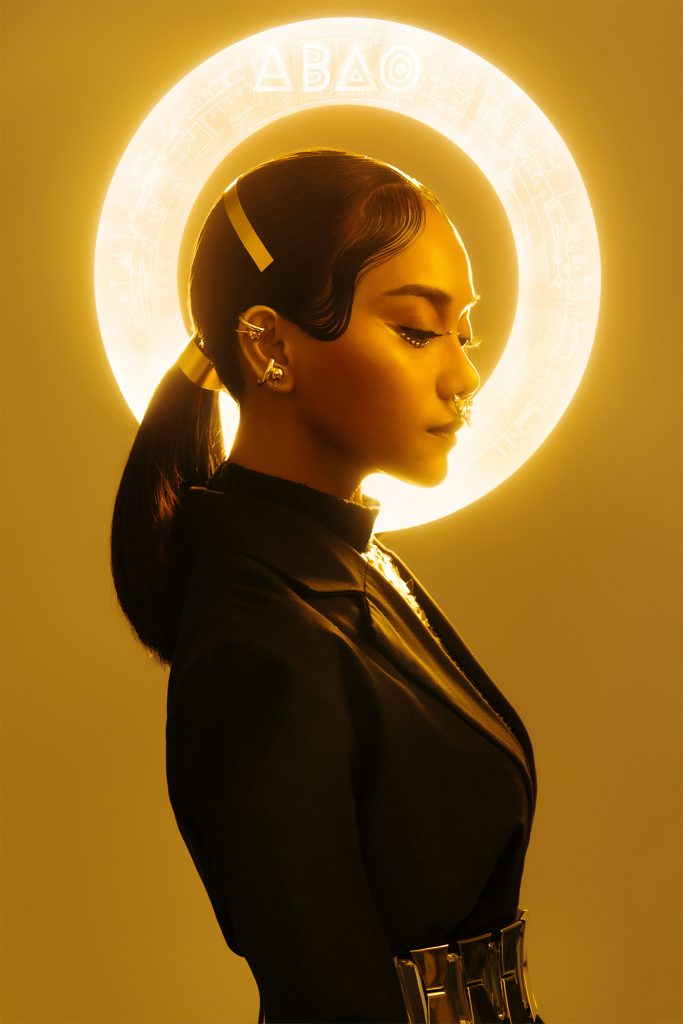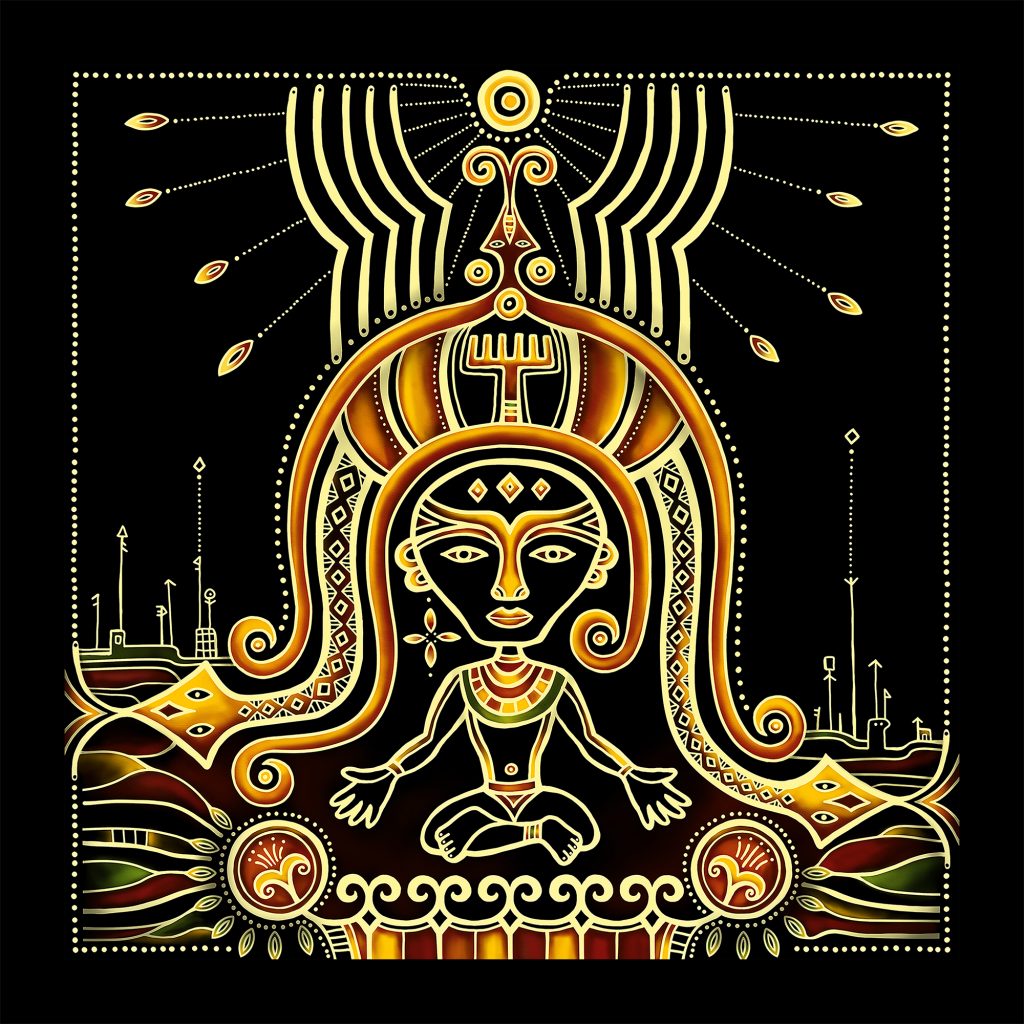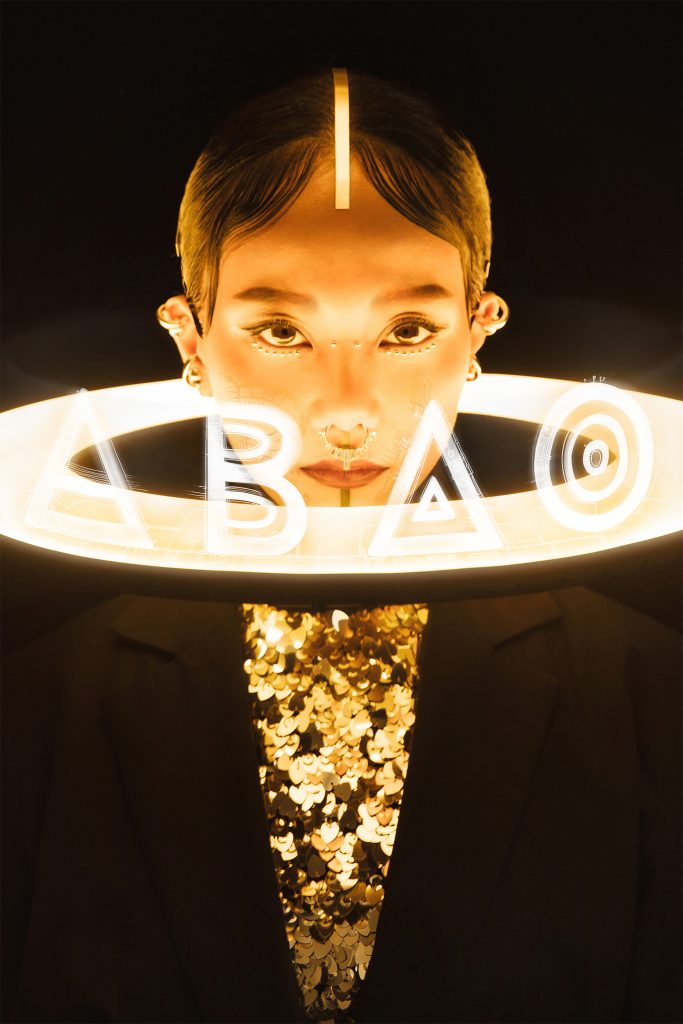Singer-songwriter and multi-talented media darling ABAO embodies the role of cultural ambassador and torchbearer for Taiwan's indigenous Paiwan people by bridging the gap between traditional forms of expression and modern innovative creative trends. Her latest album, KINAKAIYAN (Mother Tongue), recruited the genre-bending whizz kid producer Dizparity behind the beats and a team of other talented artists adding their own flourishes to the project. With the help of Dark Paradise Records' Oberka taking the helm by mixing the vocals for the record, overseeing the mastering of KINAKAIYAN in Las Vegas, as well as co-producing the whole album, a truly assorted musical flavor was cultivated. Singing with R&B, pop, and soul inflections in the Paiwan language creates a vibrant sonic atmosphere where storytelling and celebrating the beauty and simplicity of daily life feels natural. Even the album title is a nod to embracing the world at large even when a language barrier exists, as well as ABAO's deep connection with her own family. Getting lost in the music dissolves these boundaries and builds a new world of possibilities with fresh perspectives.
What started as a rough demo recording of lyrics and musical sketches, Dizparity, ABAO, Orberka and many other skilled musicians worked together over several months on recording and developing the first full-length album to be completed at Taipei's Coop Studio. R&B vocals and lyrical sensibilities sung in Taiwanese, Amis, English, Mandarin, and Paiwan languages sewn together with electronic music, gospel, hip-hop, and even Latin rhythms gives listeners something unlike anything they've heard before. All ten tracks seem to have a life of their own, while remaining consistent thanks to the top-notch production and ability to experiment effectively with a range of styles.

We asked Dizparity to delve into the background of the project and how working with ABAO inspired him to create something special:
"I met ABAO in CMW (Canadian Music Week 2018), we were both doing live shows in the festival showcase at a Taiwan night event. Afterwards, we sent each other ideas online back & forth, though it never got to the finishing stage, we did try a lot of styles during that period of time. And I knew ABAO really has this rare potential to deliver in such diverse but also emotionally-powerful way in multiple genres of electronic music.
I remember I did a drum & bass and a dancehall tune back then with her, it was quite a DJ dance floor mix. However it ended up being a completely different version of what we cut in the album, she is just so good at translating her vocal emotions among the textures of the beat. Sometimes during the recording session, she even got the characters in her head to help her sings some specific lines in a tonally distinguished way.
As for the writing process, we never sat in the room together coming up with the beat and demo. She had her ideas jamming from random music loops and I broke down the structure to add my arrangement and sounds and bring more musical elements to the song. The most tricky one in the composition process was "Uduli." ...There's no clear verse and chorus structure wise, the whole demo was just based on one super catchy hook and it keeps building with the crowd vocals. Until I came up with that Indian snakey lead in the drop, we all felt that it's the coolest direction for the song to go, and she even translated the ancient Paiwan tune on the bridge in a strong dance music style.
The early finished tracks like "Tjakudain" and "Ten", we started with my old finished beats and it's pretty close to what we heard in the album version. I felt really surprised when i first heard ABAO's demo, that's totally not the material I would think about to work on with the vocalist, but it just perfectly fits in a unique sonically and groovy way. And of course, I have to thank producer Huang Shao Yong for helping on the stem mixing stage, making ABAO's vocals as powerful as they should be. And ABAO's spirit of experimentation gave us huge freedom to play around with her vocals. Without that, we wouldn't have been able to make such pioneering Taiwanese cultural electronic dance music album."

Incorporating distinct and recognizable Paiwan style graphic art by Bawa Walloon into the album design also gives KINAKAIYAN an element that engages with audiences on another level. Each song has a corresponding picture that strikes a visual chord and gives a nonverbal hint into the meaning and message of the individual tracks.
The music video singles for "1-10" and "Thank You" are a window into the lifestyle and wholesome values and spirit of the Paiwan people. "1-10" uses an instrumental beat selected from Dizparity's archive blended with a field recording of a prayer provided by ABAO. The song uses the choppy vocalization of Paiwan language to add emphasis and natural rhythm.
On "Thank You", ABAO brought in her friend and longtime music partner Brandy along with a children's church choir from Taidong and Argentinian pianist Musa. The video was shot at a Pingtung church in southern Taiwan to effectively capture the mood of the song.
The latest music video release from the album is a love song with DJ Didilong. "Tjakudain" tells the story of a cross-culture relationship between a Paiwan woman and a Taiwanese man whose parents won't let them be together. The lovers trade sentiments in their respective languages and express their romantic story over a smooth and bittersweet beat.
ABAO's impressive catalog sporadically spans over 15 years. It all started with 2003's Mandarin pop record duet collab ABAO+Brandy that won best vocal collaboration album at the Golden Melody Awards the following year. While that might have launched her career, the record label went bust shortly after.
Inspired by her grandmother's vision of sharing Paiwan music with a larger audience, ABAO worked on reimaginings of 22 Paiwan ballads, giving them new life with modern vocal arrangements and production. With her grandmother's singing to guide the way, The East Payuan Folk and Three Generations (東排三聲代) was released in 2014. This in turn led to ABAO reinventing herself as an indigenous R&B singer with original songs and concepts that displayed her raw talent as a solo artist on 2016's Vavayan. Proving that ABAO stands out as a unique vocalist and artist, that album was lauded as the Best Indigenous Album and Best Producer at the 2017 Golden Melody Awards. She described her motivation behind making Vavayan to Taiwan Scene saying: "Just listen to the music and don't be afraid if you can't understand the language. I hope that the combination of ancient language and modern style can help more listeners get in touch with Paiwanese, especially the new generation of indigenous youths. We lose a lot of our culture because of the changing nature of our lifestyles. In the context of use of our mother tongue, writing lyrics is a good way to maintain the use of the language. If you use it, it will not be eliminated. It is also nice to share that I learnt my own mother tongue through music."
As the host of a show on Taiwanese Indigenous Television, ABAO uses her own personality and charisma to share Paiwan art and culture with viewers. Music has an inherent power to cross cultural boundaries and create a powerful dialectic between artists and listeners. This energy becomes even more pronounced in a place like Taiwan, which is blessed with a diversity of aboriginal groups that have their own deep and exceptional cultural traditions. After spending years in and out of the spotlight, receiving accolades from critics, and sharing her music with the world, ABAO continues to hold it down for her people. She has a flare for taking the beauty of Paiwan style and adding a futuristic spin.

For fans in Taipei, ABAO will be celebrating the release of KINAKAIYAN with a concert at Leagcy on 1/16.





